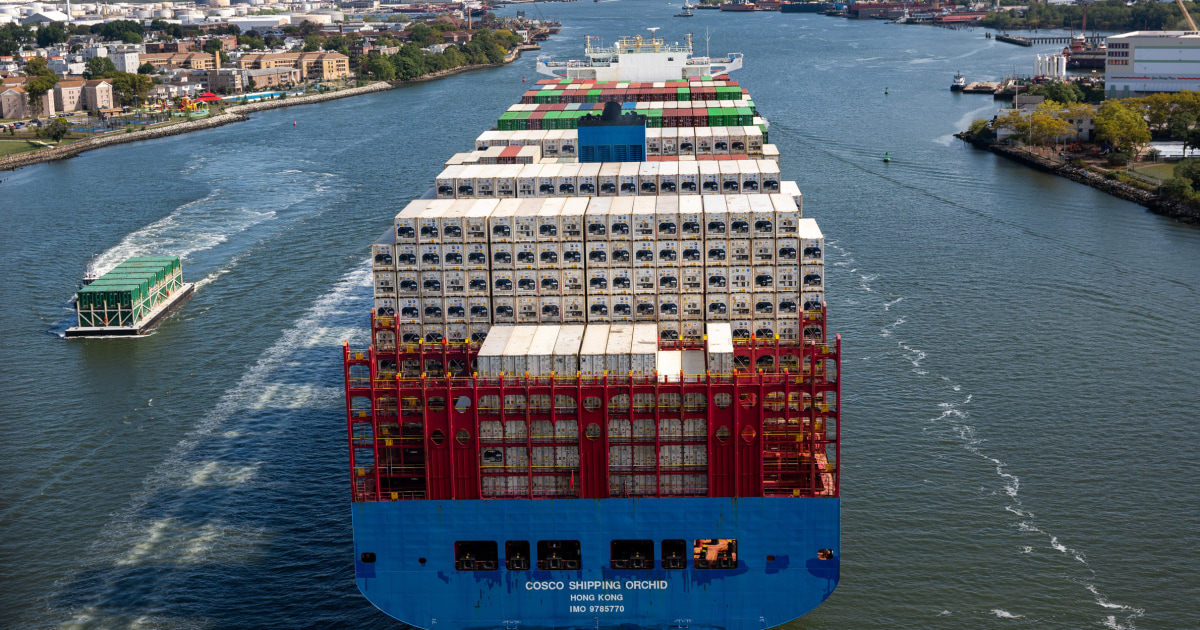Longshoremen Strike: A Major Disruption to U.S. Ports and Economy
At the stroke of midnight ET, tens of thousands of longshoremen initiated a strike that has sent shockwaves through major ports along the East and Gulf coasts. This unprecedented work stoppage has effectively shut down operations at key shipping hubs, disrupting the flow of goods ranging from fresh produce to essential auto parts. As the holiday shopping season approaches, the implications of this strike could be profound, affecting consumers and the broader U.S. economy.
The Immediate Impact on Supply Chains
The ports involved in this strike are critical to the U.S. economy, handling approximately half of the nation’s ocean imports. Estimates suggest that between 25,000 and 50,000 members of the International Longshoremen’s Association (ILA) are participating in the strike, which caps months of escalating tensions between the union and the United States Maritime Alliance (USMX). With the ILA boasting a total membership of 85,000, the scale of this work stoppage is significant.
While consumers may not feel the immediate effects of the strike unless it extends for several weeks, analysts warn that the economic fallout could be severe. Estimates indicate that the strike could cost the U.S. economy anywhere from several hundred million dollars to as much as $4.5 billion per day. The financial burden of redirecting goods along longer routes will likely be passed on to consumers, potentially leading to higher prices for everyday items.
Union Demands and Corporate Profits
The strike is rooted in a broader context of labor disputes and economic inequality. Union leaders argue that global cargo carriers have reaped enormous profits in the wake of pandemic-induced supply chain disruptions, which drove freight rates to record highs. They contend that longshore workers have not adequately shared in these financial gains, prompting the current strike action.
In a powerful address to union members at Maher Terminals in Elizabeth, New Jersey, ILA President Harold J. Daggett emphasized the historical significance of their actions. “This is going down in history what we’re doing here,” he declared, underscoring the resolve of the workers. Daggett expressed confidence that the strike would not be a prolonged affair, stating, “They can’t survive too long,” referring to the shipping companies.
Stalled Negotiations and Future Prospects
The strike comes after a period of stalled negotiations between the ILA and the USMX. The union is seeking not only wage increases but also limitations on automation at ports, which they argue could threaten jobs. The USMX, representing major ocean freight and port operators, has indicated that it was engaged in ongoing discussions with the union and had hoped to avert a work stoppage.
In a statement released prior to the strike, the ILA expressed its frustration with the USMX’s offer, stating, “The Ocean Carriers represented by USMX want to enjoy rich billion-dollar profits that they are making in 2024, while they offer ILA Longshore Workers an unacceptable wage package that we reject.” This sentiment reflects a growing frustration among workers who feel left behind in an economy that has seen significant corporate profits.
Broader Economic Implications
As the strike unfolds, the potential for widespread economic repercussions looms large. The timing is particularly critical, with the holiday shopping season just around the corner. Retailers, who have been preparing for increased consumer demand, may find themselves grappling with inventory shortages if the strike continues. This could lead to empty shelves and delayed deliveries, ultimately impacting consumer spending during one of the most lucrative times of the year.
Moreover, the strike could exacerbate existing supply chain challenges that have plagued the U.S. economy in recent years. Businesses that rely on timely deliveries may face increased costs and logistical hurdles, further complicating their operations.
Conclusion
The strike by longshoremen represents a pivotal moment in labor relations within the U.S. shipping industry. As workers demand fair compensation and job security in an era of soaring corporate profits, the outcome of this dispute will likely have lasting implications for both the labor movement and the economy at large. With the stakes so high, all eyes will be on the negotiations between the ILA and USMX in the coming days, as the nation watches to see how this critical situation unfolds.


